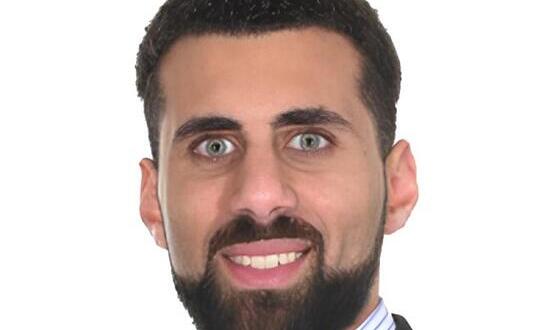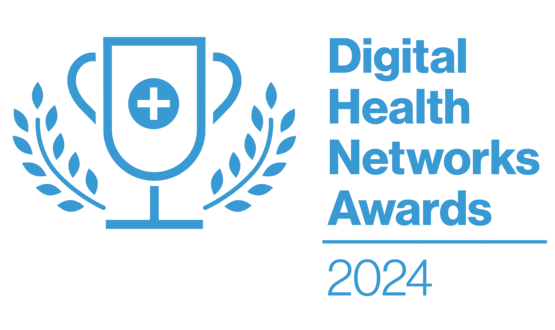CCIO profile: Dr Charles Gutteridge
- 7 August 2013

Charles Gutteridge qualified as a doctor in the mid-1970s. It was a time when personal computing was starting to become reality; an era he describes as one in which “there was a transformation in the ability of an ordinary citizen with no informatics skills to do computation.”
Even so it comes as a surprise to learn that, since the first day he became a medic, Dr Gutteridge has ordered tests electronically.
“When I qualified, I had a green screen mainframe system that allowed me to request tests, request imaging, and look up the results at the end of the day on a screen,” he remembers.
London calling
Yes, a computerised physician order entry system – something which would prove to be a challenging aspect of the National Programme for IT in the NHS for which Dr Gutteridge would serve as national clinical director some 30 years later.
How did this consultant haematologist manage to be exposed to the power of healthcare informatics so early on? His reply is accompanied by a laugh and an admission that it wasn’t by design.
“I was particularly lucky in that I was a medical student and then a house officer at the Royal London,” he explains. “And a group of almost prescient human beings at the hospital saw the opportunity of informatics.
“It was one of three hospitals in London that were selected and funded by the Department of Health to build some of the first health IT in the UK.”
By and large, Dr Gutteridge has spent his career at the Royal London. When it is suggested he is fortunate to have been at an organisation which seems to have been at the forefront of healthcare information from the very beginning, he makes an important admission.
“It would be quite false of me to pretend that the Royal London, or Barts Health as it is now, has always had a peak position in health IT,” he reports.
“But when it does get above the parapet, it is because expectations have been reset of redeveloped or redefined by a leader who understands the power of medical computation.”
Integrating IT, and working fast
Since May, that leadership task has fallen to Dr Gutteridge. As chief clinical information officer at what is the UK’s largest healthcare trust – it was formed through the 2012 merger of three organisations – he is surveying a long to do list.
Top priority: integrating the three different IT systems currently being used across the new trust (“a year’s work at least,” he estimates, with another six months to have a unified prescribing and medicines management system).
If the target is to be realised, speedy and significant change will be required. That is intentional, says Dr Gutteridge, and draws on lessons he feels he learned when working at a national level.
“There is a really, really rigorous need to set a pace about change which is fast and demanding and incredibly demanding of your staff, otherwise you just slop about,” he argues.
“What is clear about the national programme is that we did not drive fast enough, and I think one of the things we can do here in east London is to drive fast; make adoption of the systems just part of what we all do every day.
“I think it’s setting personal and organisational stretch, in which people are always a bit breathless about what they have to do.
“I think if you do that, people start to recognise what success looks like. If you pace it too slowly, you don’t get that incredibly powerful gasp of surprise when something happens.”
Head of a team
Driving this change is not a task Dr Gutteridge will be undertaking alone. The trust has also appointed four site-based clinical information officers.
“It was very obvious to both me and to our director of informatics that there would only be success if we had local leadership while we create a fully functioning merged organisation,” Dr Gutteridge explains.
“Inevitably, the cultures of medicine, nursing and management at the three previous organisations are very different and were based in the past, to some extent, on both competition and defence. So bringing people together does need advocates from each part of that.”
There are two groups he is particularly keen form part of that united whole in informatics: nurses and allied health professionals.
“The reason I’m really excited by the involvement of both those groups is that in my experience, both locally and in wandering around the world, it’s often nurses who use the solution in particular bits of whatever it is they do,” he explains.
“The ability to use the solution to make the job easier is often first led by nurses and then doctors say, hmm, that’s really rather good, let’s have more of that please! So I think they are fantastically good at first of all driving things and shaping early use for others to follow.”
Getting to nurses and AHPs
Barts Health hopes that the clinical information officer roles might represent a formal way for nurses and AHPs to lead on informatics at the trust. For now, the approach is a more gradual one.
“We’ve not been as successful in getting nurses to make the step forward to taking on the kind of leadership, clinical information officer roles,” explains Dr Gutteridge.
“So our plan is to identify people from our own organisation who want to be seconded in to an implementation-type role for a period of six months, a year, to develop the confidence at nursing or in the AHPs to deliver care using IT. And then nudge them into these roles.
“Because at the moment they haven’t stepped forward. And I think that’s partly anxiety about professional status and partly anxiety about do I know enough to do this.”
Developing CCIOs
The professional status of informatics and clinical leaders within it is clearly a topic to which Dr Gutteridge has given some thought. His essential conclusion: it is still developing.
“To me it feels a bit like the appointment of medical directors in 1991 when trusts were first formed,” he says. “I think chief executives as they were being appointed sort of had a vague idea of what they were supposed to do.
“But I’m absolutely certain, because I can remember talking to them here and at Newham and elsewhere, that medical directors didn’t have an idea of what they were for!
“That’s changed a lot over the years. The same will happen with CCIOs. It’s a really important part of the future, I think.
“CCIOs will become a cadre of people from whom medical directors are chosen or, as in my case, a great opportunity for people who have completed their time as medical directors.”




